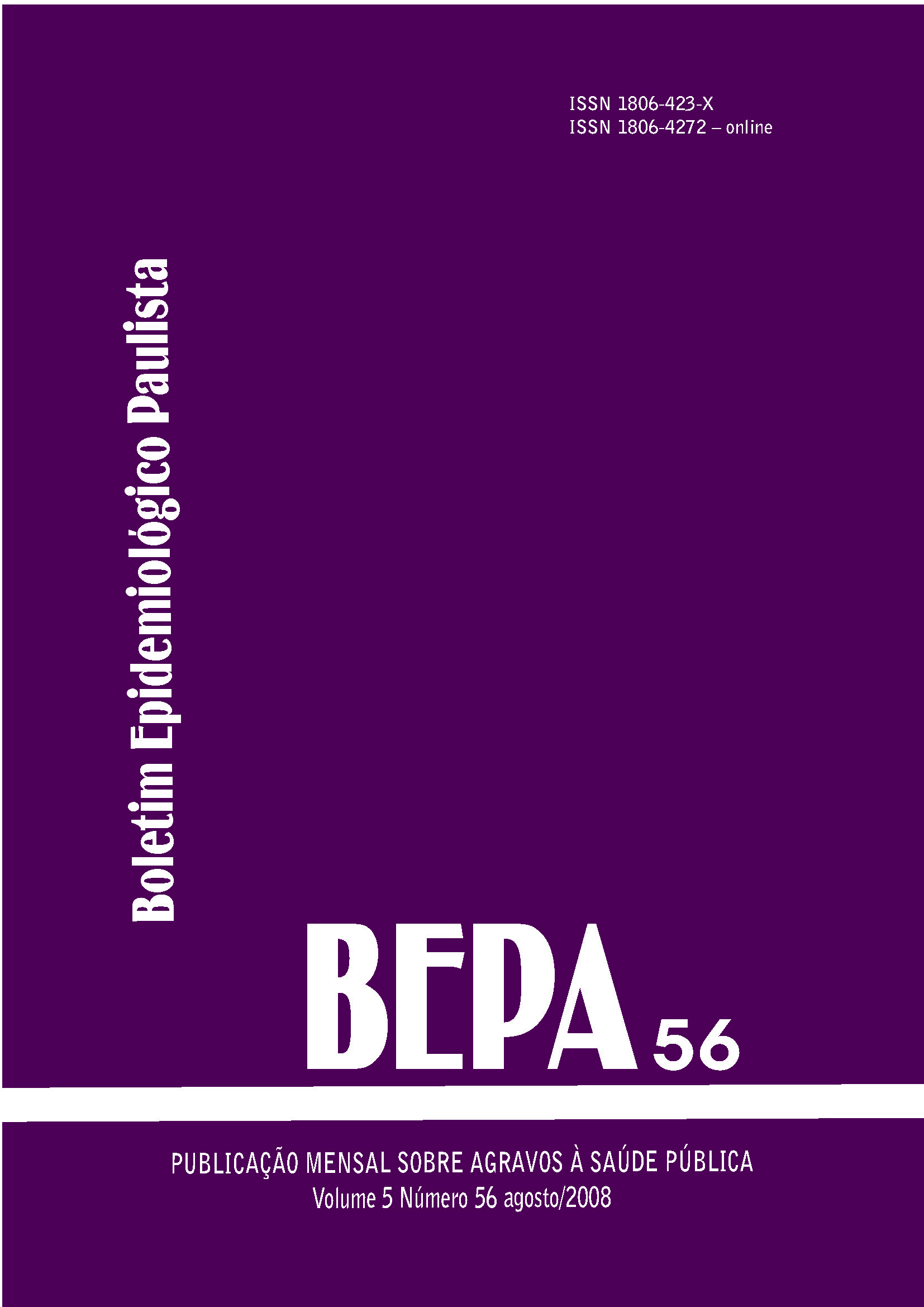Abstract
The finding of naturally infected Dasypus novemcinctus armadillos by the fungus Paracoccidioides brasiliensis opened new perspectives for eco-epidemiological and evolution studies with this pathogen. In the present study the occurrence of P. brasiliensis in armadillos captured in the Cerrado Reservation area of Bauru/SP was evaluated. Four animals were captured (C1-C4) and after euthanasia lung, liver, spleen and mesenteric lymph nodes were collected for mycological and molecular evaluation. Ribosomal DNA fragments were amplified by PCR and Nested-PCR using P. brasiliensis specific primers. The fungus was isolated in three animals from lymph node (C1), liver (C4) and spleen samples (C2 and C4). In 3 tissue samples 387bp amplicons were identified. The detection of infected animals in the Cerrado Reservation area reinforces the use of these animals as sentinels for the presence of the pathogen in the environment. This is the first description of such evaluation in Bauru municipality
References
Marques AS, Porro AM, Mendonça IRS, Haus Filho G. Micoses oportunísticas e de comportamento oportunista no Brasil. An Bras Dermatol. 1996;71(2):25-29.
Untereiner WA, Scott JA, Naveau FA, Sigler L, Angus JBA. The Ajellomycetaceae, a new family of vertebrate-associated Onygenales. Mycologia. 2004;96(4):812-21.
R a m o s - S i l v a M , S a r a i v a L E . Paracoccidioidomycosis. Dermatol Clin. 2008;26(2):257-69.
Martinez R, Moya MJ. The relationship between paracoccidioidomycosis and a l c o h o l i sm. Re v Sa ú d e Pú b l i c a . 1992;26(1):12-6.
Wanke B, Londero AT. Epidemiology and paracoccidioidomycosis infection. In: Franco MF, Lacaz CS, Restrepo A, Del Negro G. Paracoccidioidomycosis. Boca Raton: CRC Press; 1994.
Coutinho ZF, Silva D, Lazera M, Petri V, Oliveira RM, Sabroza PC, Wanke B. Paracoccidioidomycosis mortality in Brazil (1980-1995) . Cad Saúde Públ ica. 2002;18(5):1441-54.
Bagagli E, Bosco SMG, Theodoro RC, Franco M. Phylogenetic and evolutionary aspects of Paracoccidioides brasiliensis reveal a long coexistence with animal hosts that explain several biological features of t h e p a t h o g e n . I n f e c t Ge n Ev o l . 2006;6(5):344-51.
Bagagli E, Sano A, Coelho KIR, Alquati S, Miyaji M, Camargo ZP, et al. Isolation of Paracoccidioides brasiliensis from armadillos (Dasypus novemcinctus) captured in an endemic area of paracoccidioidomycosis. Am J Trop Med Hyg. 1998;58:505-12.
Bagagli E, Franco M, Bosco SMG, Hebeler- Barbosa F, Trinca L, Montenegro MR. High frequency of Paracoccidioides brasiliensis i n f e c t i o n i n a rma d i l l o s (Da s y p u s novemcinctus): an ecological study. Med Mycol. 2003;41: 217-23.
Naiff RD, Ferreira LCP, Barret TV, Naiff MF, Arias JR. Paracoccidioidomicose enzoótica em tatus (Dasypus novemcinctus) no Estado do Pará. Rev Inst Med Trop São Paulo. 1986;28:19-27.
Naiff RD, Barret TV. Novos registros de Paracoccidioides brasiliensis em tatus (Dasypus novemcinctus). In: Congresso Brasileiro Parasitologia, 1989, Rio de Janeiro, p. 197.
Silva-Vergara ML, Martinez R. Role of the armadillo Dasypus novemcinctus in the epidemiology of paracoccidioidomycosis. Mycopathologia. 1999;144(3):131-3.
Silva-Vergara ML, Martinez R, Camargo ZP, Malta MHB, Maffei CML, Chadu JB. Isolation of Paracoccidioides brasiliensis from armadillos (Dasypus novemcinctus) in na area where the fungus was recently isolated from soil. Med Mycol. 2000;38:193-99.
Corredor GG, Castaño JH, Peralta LA, Díez S, Arango M, McEwen J, et al. Isolation of Paracoccidioides brasiliensis from the ninebanded armadillo Dasypus novemcinctus, in an endemic area for paracoccidioidomycosis in Colombia. Rev Iberoam Micol. 1999;16:216-20.
Corredor GG, Peralta LA, Castaño JH, Zuluaga JS, Henao B, Arango M, et al. The naked-tailed armadillo Cabassous centralis (Miller 1899): a new host to Paracoccidiodes brasiliensis. Molecular identification of the isolate. Med Mycol. 2005;43(3):275-80.
Restrepo A. Ecology of Paracoccidioides brasiliensis. In: Franco M, Lacaz CS, Restrepo A, Del Negro G, editores. Paracoccidioidomycosis. Boca Raton: CRS Press; 1994.
Hebeler-Barbosa F, Morais FV, Montenegro MR, Kuramae EE, Montes B, McEwen JG, Puccia R, Bagagli E. Sequence comparison of the internal transcribed spacer regions and gp 43 in Paracoccidioides brasiliensis for patients and armadillos Dasypus novemcinctus. J Clin Microbiol. 2003;41:5735-37.
Sano A, Tanaka R, Yokoyama K, Franco M, Bagagli E, Montenegro MR, Mikami Y, Miyaji M, Nishimura K. Comparison b e twe e n h uma n a n d a rma d i l l o Paracoccidioides brasiliensis isolates by random amplified polymorphic DNA a n a l y s i s . My c o p a t h o l o g i a . 1999;143(3):165-9.

This work is licensed under a Creative Commons Attribution 4.0 International License.
Copyright (c) 2008 Virgínia Bodelão Richini-Pereira, Sandra de Moraes Gimenes Bosco, Severino da Graça Macoris, Raquel Cordeiro Theodoro, Silvia Cristina Barbosa Pedrini, Patrícia Sammarco Rosa, Eduardo Bagagli
